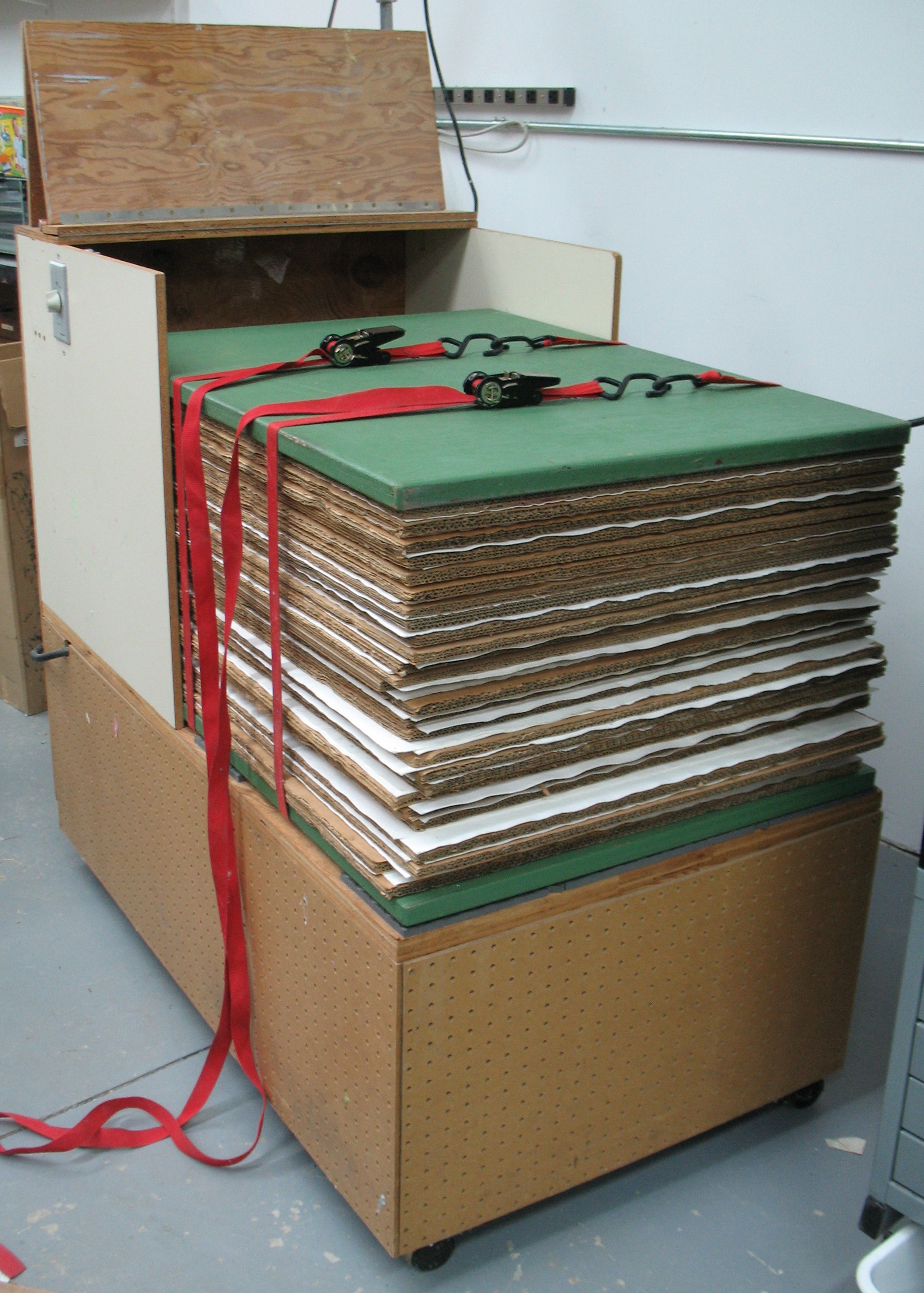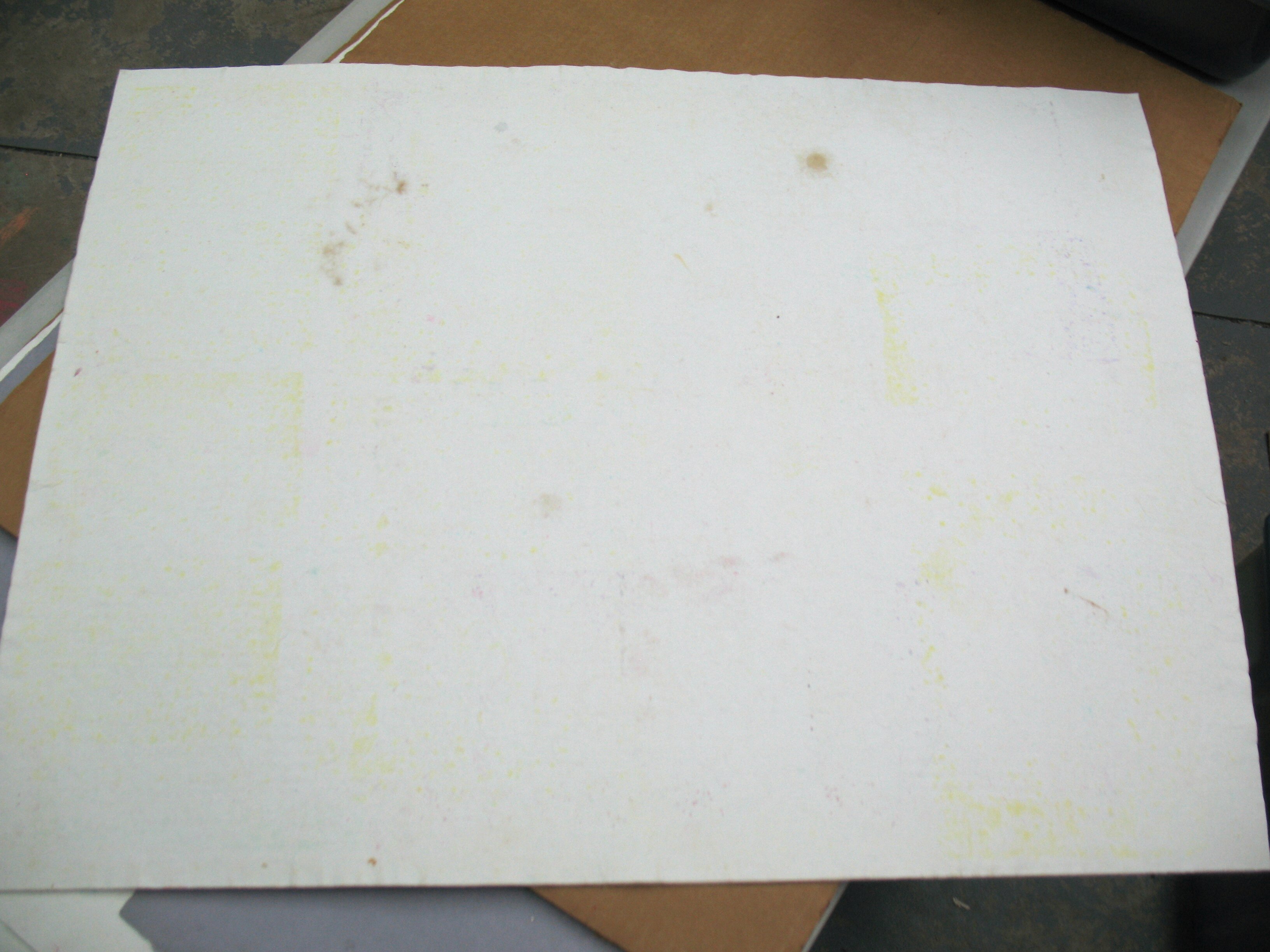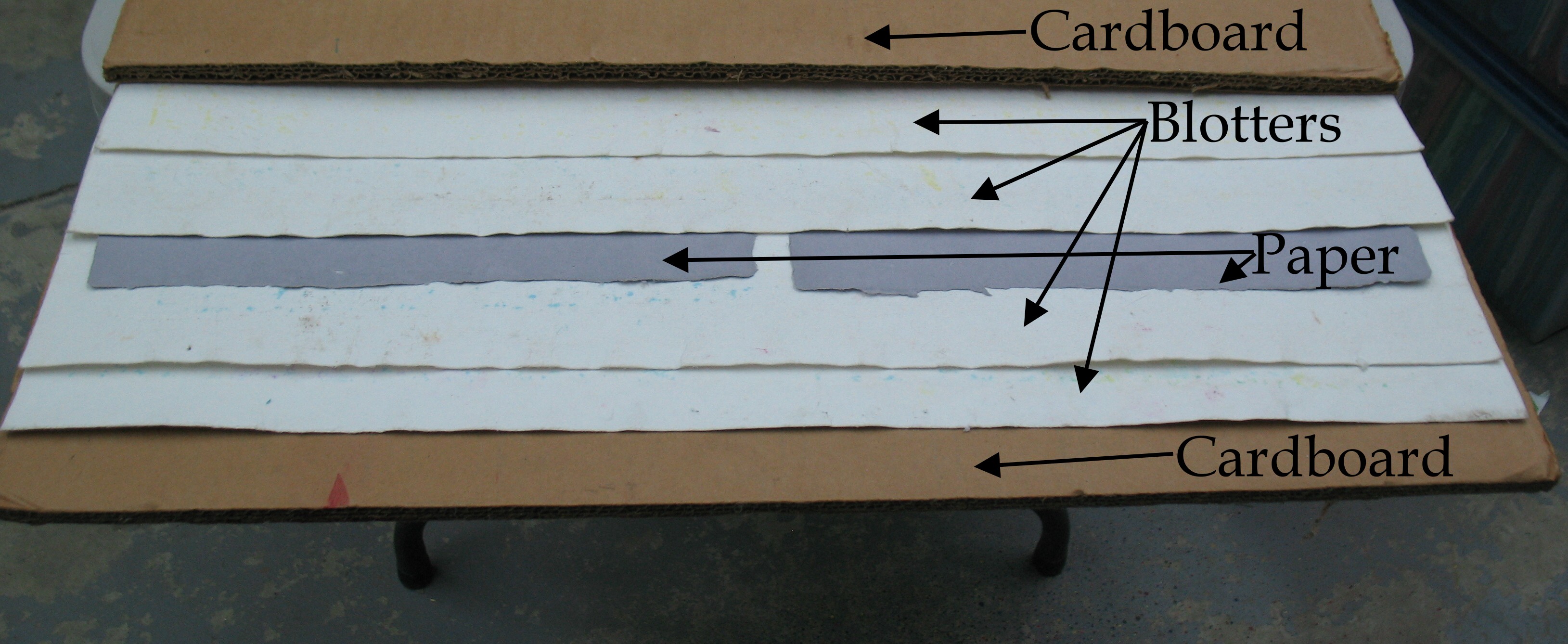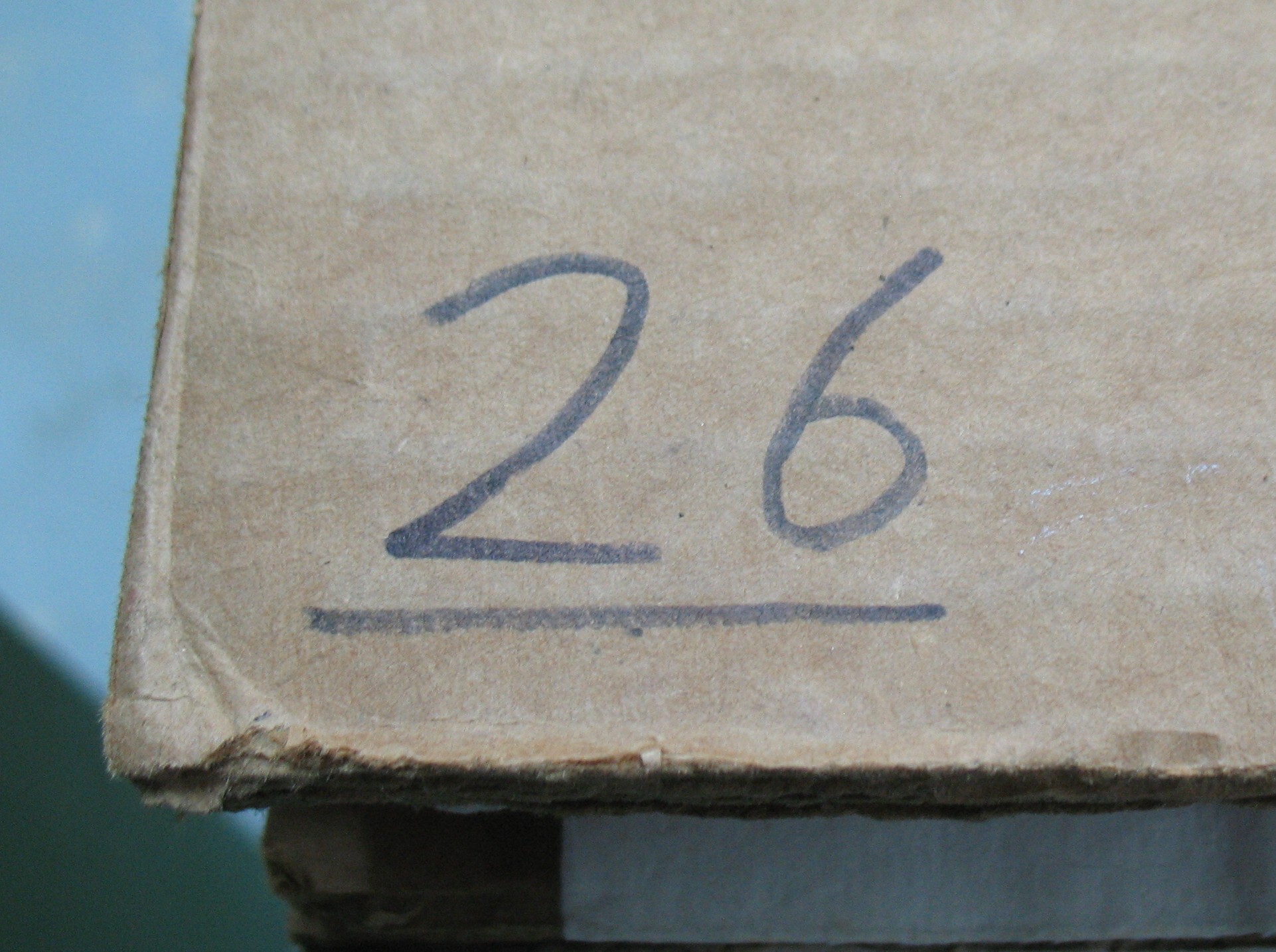We sell parts for making a restraint drying system for handmade paper. The wet sheets are held between absorbent blotters while a cross flow of air carries away the moisture as it evaporates. The blotters keep the paper flat and limit the amount of shrinkage.
The system centers around a stack which alternates wet paper and multi-layer corrugated cardboard with blotters separating them all. Some of the moisture evaporates directly from the paper, and some wicks into the blotters where it evaporates. In either case, a fan forces air to flow through the stack, primarily through the corrugations of the cardboard, and this airflow carries away the moisture. A pair of web clamps provide pressure to keep the paper and blotters firmly in contact, and top and bottom wood boards distribute the pressure from the clamps.
For blotters you can use cotton linters pulp sheets or spun-bonded polyester fabric, or even a combination of the two. The linters sheets are fairly rigid (provided they don’t actually get wet from wicking) and so prevent the surface texture of the cardboard from imprinting on the paper.
The parts we sell for this system are:
- the heavy corrugated cardboard
- 2nd cut cotton linters blotters
- polyester blotters (listed in our catalogue as “Dryer Felt”)
- web clamps
- plastic sheeting
- a kit containing 10 cardboards, 36 sheets of 2nd cut linters, 2 web clamps, and plastic sheeting
There’s no real reason to prefer 1st or 2nd cut linters, but when we designed the system, the 2nd cut linters were less expensive and now we stick with them because they are the right size for the carboard.
Both the linters and the cardboard sheets are 27×36″/69×92cm but for a small additional charge we can cut the sheets to smaller sizes for you.
The parts you have to supply are the top and bottom boards and a fan. The fan should be an enclosed one such as a box fan or ducted fan.
You also have to rig some way of forcing the air from the fan through the stack. The airflow is essential; without it, moisture will wick all the way to the cardboard causing it to delaminate, and drying will be so slow that you will have problems with mold growth. One way to do this is to use tape to form the polyethylene sheet into a large tube attached to the fan and the stack to force the air from the fan through the stack. A more permanent way is to build a drying box.
These photos show how we use the system.

Our drying box, with the drying system in place. An old furnace fan in the base blows upwards into the upper box, and the multi-hinged lid, when closed, forces the air to flow through the stack. A 12-hour wind-up timer controls the fan power. The whole unit is on casters for easy moving. The system is empty in this photo; in use the drying layers would be stacked a bit neater.
Although the combined system we sell provides doubled linters sheets as blotters, and the above photo shows this, we normally use only single linters sheets for our drying. The critical issue is whether the wet paper has enough free moisture to wet the blotters by wicking before evaporation can take away the moisture. If the linters sheet becomes wet enough, it softens and the cardboard texture can imprint on the paper; using double blotters prevents this. In our shop, we have a strong press that produces very dry sheets and we seldom make very thick sheets so a heavy moisture load is not a concern for us.

With repeated use, the blotters eventually become stained. The stains do not, however, transfer back to other paper, because the moisture is always moving from the paper to the blotters.
The staining comes from poorly-retained pigments or from plant inclusions that bleed. If we ever got a blotter sheet that is so badly stained that we would be worried about it staining other paper, we would just set it aside for pulping and replace it with a new sheet. We have, however, never had a blotter that dirty.
Because the moisture is always moving from the paper towards the cardboard (but not reaching it in liquid form) there is no concern about acidity from the cardboard migrating into the paper, so it is not necessary to use archival cardboard.
We generally run our drying box by time, based on our experience, how wet the paper is, and how humid the air in the shop is. Before unloading the drying stack, we check a couple of sheets for moisture by feel: if the sheets seem limp, heavy, or feel cool to the touch, we return them to the drying stack and run the fan longer.


